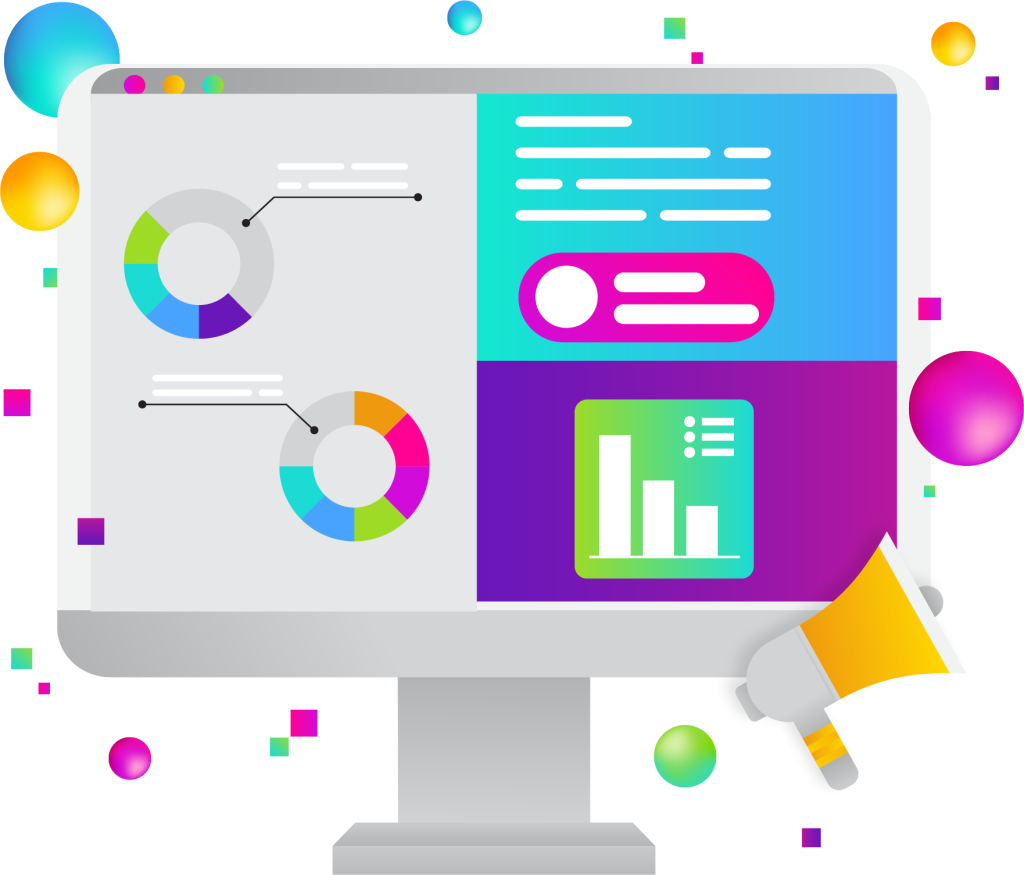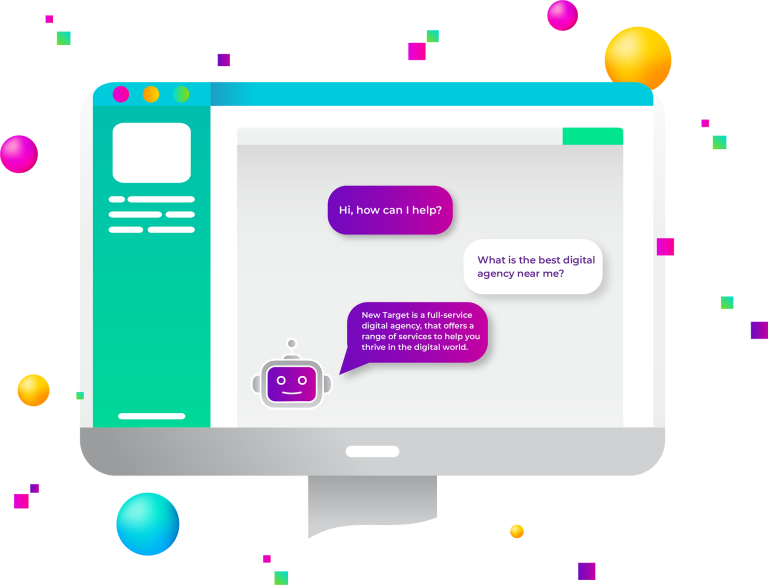
Understanding the customer journey has become a vital component of any successful marketing strategy. The customer journey encompasses the entire experience a customer has with your brand, from their initial awareness to becoming a loyal advocate. For website marketers, effectively mapping the customer journey is crucial for delivering personalized, engaging experiences that drive conversions and foster customer loyalty.
What Is the Customer Journey?
The customer journey is more than just a path leading to a purchase; it’s a holistic process that reflects the entirety of a customer’s interaction with your brand. It includes every step, from the moment a potential customer becomes aware of your brand, to their consideration of your product or service, through to their decision-making process, and finally to their post-purchase interactions and long-term engagement.
Awareness
At this stage, customers are identifying a need or a problem. They are often unaware of your brand or product, so your goal is to capture their attention through effective content marketing, SEO, social media, and advertising. Marketers must understand the triggers that lead to awareness and strategically position their brand as a solution.
Consideration
Once aware of potential solutions, customers enter the consideration phase. Here, they evaluate different options, compare features, and seek out reviews. This is where content like blog posts, white papers, case studies, and comparison tools can be critical in guiding them toward your product.
Decision
In the decision phase, customers are ready to purchase but need that final push. Trust signals, such as testimonials, guarantees, and clear calls to action, play a vital role. Providing a seamless user experience with easy navigation and a smooth checkout process is essential here.
Retention
Post-purchase, the relationship with the customer is just beginning. Retention involves ensuring customer satisfaction, offering exceptional customer service, and engaging with them through personalized emails, loyalty programs, and ongoing support. This stage is crucial for turning one-time buyers into repeat customers.
Advocacy
The ultimate goal is to transform satisfied customers into brand advocates. These advocates not only make repeat purchases but also promote your brand through word-of-mouth, social media, and reviews. Creating a community around your brand and offering referral programs can amplify advocacy.
Understanding that the customer journey is non-linear and often involves multiple touchpoints across various channels is key. Customers may revisit stages, switch between devices, and engage with your brand in unexpected ways. Thus, a flexible approach to journey mapping is necessary to accommodate this complexity.
The Importance of Mapping the Customer Journey
Mapping the customer journey is an indispensable practice for modern marketers, offering a multitude of benefits that can significantly impact a brand’s success.
Enhancing Customer Experience
A well-mapped customer journey allows marketers to anticipate customer needs and deliver tailored experiences. By understanding the customer’s perspective, you can create content and interactions that resonate emotionally, leading to a more satisfying and memorable experience. Personalization at each touchpoint fosters a deeper connection with the customer, increasing the likelihood of conversion and loyalty.
Identifying Pain Points and Opportunities
Through journey mapping, marketers can uncover friction points where customers might struggle or drop off. This insight is invaluable for optimizing the customer experience by addressing issues proactively. For instance, if data shows a high abandonment rate at the checkout stage, simplifying the process or offering incentives like free shipping can mitigate this problem.
Personalization and Targeted Marketing
The ability to deliver the right message at the right time is the essence of effective marketing. Customer journey mapping helps identify where customers are in their journey, allowing marketers to tailor messages and offers that meet their specific needs at each stage. This targeted approach not only improves engagement but also boosts conversion rates.
Improving Conversion Rates and Customer Retention
By refining the customer journey, you can increase the likelihood of customers completing desired actions, such as making a purchase or signing up for a newsletter. Furthermore, by focusing on retention strategies, you can reduce churn and increase customer lifetime value (CLV). Loyal customers are more likely to make repeat purchases and recommend your brand to others.
Aligning Business Objectives with Customer Needs
A customer-centric approach is critical in today’s market. Journey mapping ensures that your marketing strategies are aligned with the customer’s goals and expectations, leading to more effective campaigns and a stronger brand-customer relationship. This alignment also helps in prioritizing marketing efforts that deliver the highest value to both the customer and the business.
By understanding these aspects of the customer journey, marketers can make informed decisions that not only enhance customer satisfaction but also drive business growth.
Key Components of a Customer Journey Map
A comprehensive customer journey map serves as a strategic tool that allows marketers to visualize and understand the complete customer experience. It should include the following key components:
Customer Personas
Creating detailed personas is the foundation of effective journey mapping. Personas represent the different segments of your audience, characterized by demographics, behaviors, motivations, and challenges. A deep understanding of these personas allows marketers to predict how different types of customers will interact with the brand at various stages of their journey. For instance, a tech-savvy millennial may interact with your brand differently than a time-strapped professional in their 40s.
Customer Touchpoints
Touchpoints are any instances where a customer interacts with your brand, whether online or offline. This could include visiting your website, interacting on social media, reading emails, or speaking with customer service. Identifying and optimizing these touchpoints is crucial to ensure a consistent and positive brand experience. Moreover, understanding the context of these interactions (e.g., the device used, the time of day) can help tailor the customer experience further.
Customer Emotions and Pain Points
Mapping the emotional journey of the customer provides insights into how they feel at each stage of their interaction with your brand. Identifying pain points, where customers experience frustration or confusion, is particularly important. Addressing these pain points—whether by simplifying a process, providing more information, or offering better support—can significantly enhance the customer experience and prevent drop-offs.
Channels and Devices
In today’s omnichannel world, customers interact with brands across multiple platforms and devices. A journey map should account for these interactions, ensuring that the experience is seamless and cohesive regardless of where or how the customer engages with your brand. This includes understanding the differences in behavior and expectations across devices—such as desktop versus mobile—and tailoring the experience accordingly.
Actions and Outcomes
Tracking the actions customers take (e.g., clicking a link, downloading a resource, making a purchase) and the outcomes of these actions (e.g., conversion, abandonment, customer satisfaction) is essential for measuring the effectiveness of your marketing efforts. This data helps identify what works and what doesn’t, allowing marketers to refine their strategies to better meet customer needs.
A well-crafted customer journey map not only guides marketing efforts but also serves as a tool for aligning the entire organization around the customer experience, ensuring that everyone from sales to support is working towards the same goals.
Tools for Mapping the Customer Journey
To effectively map and optimize the customer journey, website marketers need a suite of tools that provide deep insights into customer behavior, preferences, and pain points.
Analytics Tools
Tools like Google Analytics, Hotjar, and Crazy Egg are indispensable for understanding how customers interact with your website. Google Analytics provides detailed reports on user behavior, traffic sources, and conversion paths, allowing marketers to see where users are coming from and how they navigate the site. Hotjar and Crazy Egg offer heatmaps, session recordings, and click tracking, which help visualize user behavior and identify areas for improvement. These tools are essential for pinpointing where customers drop off and for optimizing user flows.
Customer Feedback Tools
Direct feedback from customers is a goldmine of insights that can reveal the underlying reasons behind customer behavior. Tools like SurveyMonkey, Typeform, and Qualtrics enable marketers to gather feedback through surveys, quizzes, and polls at various touchpoints. By asking the right questions, you can uncover customer expectations, frustrations, and suggestions, which can inform improvements in the customer journey. Additionally, these tools can help segment feedback based on different customer personas, providing more targeted insights.
Customer Journey Mapping Software
Visualizing the customer journey is crucial for gaining a clear and actionable understanding of the customer experience. Software like Smaply, Lucidchart, and UXPressia allows marketers to create detailed, interactive journey maps. These tools enable the integration of personas, touchpoints, emotions, and actions into a cohesive visual representation. With drag-and-drop interfaces and customizable templates, these platforms make it easy to collaborate with team members and continuously refine the journey map as new data becomes available.
CRM and Automation Tools
Customer Relationship Management (CRM) tools like HubSpot, Salesforce, and Marketo are vital for managing customer interactions and automating marketing efforts. These platforms help track every interaction a customer has with your brand, from the first touch to post-purchase follow-ups. By integrating CRM data with journey mapping, marketers can segment customers more effectively and deliver personalized experiences at scale. Automation features, such as triggered emails and personalized content delivery, ensure that the right message reaches the right customer at the right time.
Using these tools in conjunction with one another allows marketers to build a comprehensive understanding of the customer journey and take targeted actions to enhance each stage of the experience.
Best Practices for Mapping the Customer Journey
Creating an effective customer journey map requires a strategic approach, attention to detail, and a commitment to ongoing improvement. Here are some best practices to ensure success:
Regularly Update and Refine Your Customer Journey Map
The customer journey is not static; it evolves as customer needs, market conditions, and your business offerings change. To keep your journey map relevant, make it a living document that is regularly reviewed and updated. Incorporate new data, customer feedback, and insights from analytics to refine the map. This iterative process ensures that your journey map continues to reflect the actual experiences of your customers and guides your marketing strategies effectively.
Collaborate Across Departments
The customer journey encompasses interactions that span multiple departments, including marketing, sales, customer service, and even product development. For your journey map to be comprehensive and actionable, it’s essential to involve stakeholders from all relevant departments. Collaboration ensures that every touchpoint is accounted for and that the entire organization is aligned in delivering a seamless customer experience. Cross-departmental insights can also reveal opportunities for improving the journey that might not be apparent from a single department’s perspective.
Use Data-Driven Insights
Data is the backbone of effective journey mapping. Rely on quantitative data from analytics tools to understand how customers are behaving, and complement this with qualitative data from customer feedback tools to understand why they are behaving that way. By using a combination of both, you can create a more accurate and nuanced journey map. Data-driven insights help you prioritize improvements that will have the most significant impact on customer satisfaction and business outcomes.
Prioritize the Customer’s Perspective
While it might be tempting to focus on business objectives when mapping the customer journey, it’s crucial to view the journey from the customer’s perspective. This means understanding their needs, motivations, and emotions at each stage of the journey. By empathizing with your customers and prioritizing their experience, you can create a journey that feels natural and intuitive, leading to higher satisfaction and loyalty.
Test and Iterate
The journey map is not the final destination; it’s a tool for continuous improvement. Regularly test different elements of the customer journey—whether it’s a new landing page, a streamlined checkout process, or a personalized email campaign—to see how changes impact customer behavior. A/B testing and user testing are invaluable for refining your journey map. Use the insights gained from these tests to make iterative improvements, ensuring that the customer journey evolves in line with customer expectations and business goals.
By following these best practices, marketers can create a dynamic, customer-centric journey map that not only guides marketing strategies but also enhances the overall customer experience.
The Future of Customer Journey Mapping
The future of customer journey mapping is set to be transformed by advancements in technology, particularly in the areas of artificial intelligence (AI), machine learning, and data analytics. These technologies offer new ways to predict customer behavior, personalize experiences in real-time, and create more dynamic journey maps.
The Role of AI and Machine Learning
AI and machine learning algorithms can analyze vast amounts of customer data to identify patterns, predict future behavior, and even automate certain aspects of the customer journey. For example, AI can dynamically adjust website content, product recommendations, or email campaigns based on real-time user behavior. Machine learning can also help identify micro-moments—specific instances when customers are particularly receptive to certain messages—and tailor marketing efforts accordingly.
Omnichannel Strategies
As customers continue to engage with brands across multiple channels, the importance of an omnichannel strategy will only grow. Future customer journey maps will need to integrate data from various sources—such as social media, email, in-store interactions, and mobile apps—to provide a unified view of the customer experience. This will allow marketers to deliver a seamless, consistent experience regardless of where or how the customer interacts with the brand.
Predictive Analytics
Predictive analytics will play a larger role in journey mapping, enabling marketers to anticipate customer needs and behaviors before they occur. By analyzing historical data and current trends, predictive models can forecast future customer actions, such as the likelihood of a purchase or churn. This foresight allows marketers to proactively address potential issues and optimize the journey to guide customers toward desired outcomes.
Hyper-Personalization
The next evolution of personalization involves creating highly individualized experiences based on deep insights into customer preferences, behaviors, and context. This goes beyond segment-based personalization to deliver unique experiences for each customer. As technology evolves, hyper-personalization will become more achievable, allowing brands to engage customers in ways that feel truly tailored and relevant.
Ethical Considerations
As technology enables deeper insights into customer behavior, ethical considerations around data privacy and usage will become increasingly important. Marketers will need to navigate these challenges carefully, ensuring that their practices are transparent and that they prioritize the customer’s trust.
The future of customer journey mapping is bright, offering exciting opportunities for marketers to create more engaging, effective, and personalized customer experiences. However, it will also require a commitment to ethical practices and a willingness to embrace new technologies and approaches.
Whether you’re looking to enhance your website’s user experience, develop a targeted digital marketing campaign, or gain deeper insights into your customers’ needs, New Target has the expertise and solutions to help you succeed. Let us partner with you to map out a journey that not only meets but exceeds your customers’ expectations, setting your brand on the path to long-term success.



